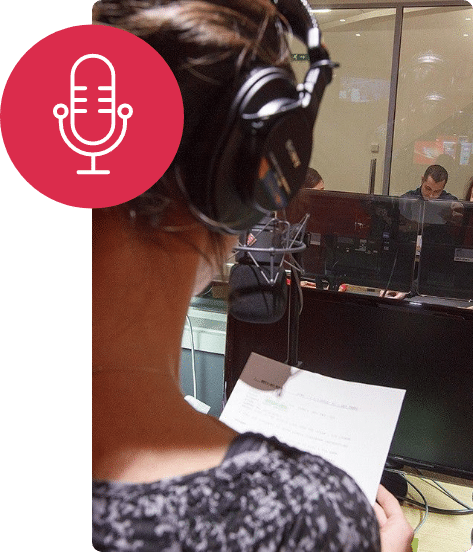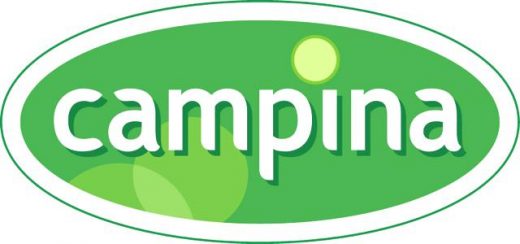Finnish Transcription Services
100% Precise and Human Generated Finnish Transcription Services!
GoLocalise offers Finnish transcription services for audio and video files for business and individual purposes. Our expert team of transcribers will create a text version of your video or audio file, and we can also translate and/or voice over your transcript.
We are your reliable Finnish transcription company!
What Is Transcription?
No, this isn’t a trick question and you might be surprised how many people get this wrong. In simple terms, transcription is the process of listening to audiovisual content and writing down what is heard.
Seems simple enough, so what exactly is the part that confuses people?
We used GoLocalise to voice several of our films in Vietnamese. The service was friendly and professional. Being able to attend the recording sessions gave me confidence; the sound engineer had taken a lot of time to familiarise himself with our films and scripts, and the voice talents were incredibly competent and good at adapting to any changes in the scripts as we recorded. The whole process was incredibly smooth and I felt in safe hands.
Let's get started!
Understanding The Difference Between Transcription and Translation
Many people confuse transcription with translation.
If you need a text version of your audiovisual content in a language which is different to the original language of your source material then you need translation (which, by the way, we can also help you with).
If you’re simply in need of a written transcript in the same language as your original audiovisual materials, that is transcription and you’re in the right place.
What Do Our Finnish Audio and Video Transcription Services Include?
A voice-to-text method that captures everything spoken, including interjections, signs of emotion (coughs, sighs, chuckles), false starts, and thought process shifts. It’s useful for reference during editing, but not ideal for finished, polished content.
This captures the speech exactly as it’s spoken, omitting filler words but without correcting grammar or sentence structure. It’s useful when accuracy is needed, but without polishing the final result.
Filler words, false starts, and mispronunciations are eliminated, with grammar corrected. This creates a refined document that reads more like proper text, ideal for publishing or any public-facing material.
Learn more about Transcription Services
Let's get started!
What Are the Benefits of Transcribing Your Finnish Audio or Video Content with GoLocalise?
There is often confusion between transcription and translation. If you need a version of your audiovisual content in a different language, the you you require translation (which we can also assist with). However, if you simply need a written transcript in the same language as your original content, then transcription is what you need — and you’ve come to the right place.
Take a podcast, for instance. By providing a text version of your audio content, search engines like Google can easily index and include it in their search results. When people search for keywords related to your subject matter, they’re far more likely to come across your material. This not only boosts your visibility but also significantly increases traffic to your site, expanding your reach and enhancing your online presence.
Journalists, bloggers, and other content creators often rely on quotes and citations to back up their arguments. When faced with two equally credible sources, one of which has already been transcribed, the transcribed version is much more likely to be chosen. Having your content available in written form makes it far easier for others to reference and quote, increasing the chances of your material being used in a variety of publications and discussions.
Creating high-quality audiovisual content, whether a podcast or a video, is both time-consuming and expensive. Why restrict it to just one format or platform? With a transcript, you can repurpose your content into a range of new formats, such as blog posts, social media updates, or short teaser clips that can attract new audiences. This process not only drives more traffic to your site but also ensures that your original content continues to serve a variety of purposes, maximising its value and impact.
One of the most important benefits of transcription is the increased accessibility it provides, particularly for people with hearing impairments. Without a written transcript, your audio or video content remains completely inaccessible to the deaf and hard-of-hearing communities. Providing a transcript ensures that everyone, regardless of their hearing ability, can engage with your content, helping to make your message more inclusive and far-reaching.
In the UK alone, there are approximately 550,000 Polish speakers, along with over a million speakers of languages such as Punjabi, Gujarati, Bengali, and Urdu. For many second-language speakers, especially when the content involves complex topics or colloquial expressions, following along with audio in a non-native language can be challenging. By providing a written transcript, you give these audiences a valuable resource to help them understand and engage with your content more effectively, bridging the gap between language barriers.
Creating your audiovisual content, whether that's a podcast or a video of some kind, is often an incredibly time-consuming and expensive process. So why use it for only one purpose? You can use a transcription to repurpose your materials into a blog or social media post, to drive traffic to your website, to use as a teaser to bring people to a full-length podcast, and many more uses too.
Can I Use a Transcription As Subtitles?
Yes, and no. GoLocalise specialises in anything audiovisual so of course if you’re in need of a full subtitling service we can absolutely help with that too, and in fact transcription is an integral part of the process when creating a same-language subtitle file.
The main difference here would be that subtitling also requires very precise technological know-how so that the resultant subtitles follow subtitling conventions and don’t prove to be distracting to the viewer.
A transcription by default won’t necessarily follow these guidelines and is better suited for other purposes, such as the ones listed above.
Tap Into Our High Quality Finnish Transcription Services Now!
So, whatever your reason for transcribing your audio or video content in Finnish, we’re happy to help.
Whether it’s to make your Finnish podcast more accessible to people with hearing impairments, for use as a starting point for a video localisation project, or for any other reason, our experience in these fields has made us the top choice for clients all over the world who want to get more out of their audiovisual content.
Our transcriptionists specialise transcribing Finnish content, but also other audiovisual content from many other languages, consistently ensuring high-quality results.

Leave your project to the experts at GoLocalise so that you can relax and be assured of getting top-notch results
Every single detail will be analysed, studied and looked after so that you do not need to worry.
Some would say it’s not too classy to blow our own trumpet… but we just like to point out two very important details.
We have achieved ISO 9001 Quality Management certification in recognition of our consistent performance and high standards, and ISO 14001 Environmental Management because we care about our planet!
And if you are still curious and want to know more about us, why not have a look at our studio page.
Learn more about Transcription Services
Let's get started!
Reach your target market
Don’t leave your important communication to chance. Make sure your message is clearly understood by your audience and choose GoLocalise for your next voice over project. Check out our latest case studies.
We have thousands of passionate and professional voice over artists ready to work with you. Meet some of them in our blog stories.
No matter the type of voice you are looking for, we’ll either have it in our books or find it and source it for you. We’ll organise a casting and ensure you get the perfect voice to suit your needs.
You will also benefit from having your own dedicated project manager – a single point of contact – to guide you through your project, answer any questions you may have and make things a whole lot easier.


Meet your dedicated project manager
Your project will be in the safe hands of one of our multilingual project managers. They will guide you through every step and ensure you understand the process.
Our industry has a tendency to use lots of technical jargon but your dedicated project manager will be on-hand to untangle the mess and explain all you need to know to ensure you only pay for what you need.
If you need help in choosing the right voice over talent to deliver your message then just ask your project manager.
From booking our voice over recording studios to ensuring you project is delivered on time in your chosen media, relax and let your experienced project manager take care of everything.
You will receive unparalleled attention to detail and customer focus at competitive prices. You’ll wish everything was as easy as a GoLocalise voice over agency!
Perfect voice over recording studios
Your most discerning customers will thank you for choosing our modern state-of-the-art recording studios. Every detail has been carefully thought through for your comfort, leaving you to simply focus on what matters most – the voice over session.
Your recordings will sound beautiful and crystal clear thanks to our high-end studio sound-proofing and audio equipment, i.e. ProTools HD and Neumann microphones.
Maximise your budget by reducing the need for retakes with the help of our experienced in-house sound engineers who will professionally capture and edit your audio.
And for those recordings in languages which neither you nor your client speak, we’ll bring a qualified pro to your session to add that essential ingredient.
To make you feel right at home, we provide high-speed Wi-Fi Internet and air-con is available. And last but not least, we have the biggest cookie jar you’ve ever seen, that’ll make your custom brew taste even sweeter!

What our happy customers say
Philippa Strandberg-Long
Deputy Course Leader - Acting, Italia Conti
Jonathan Lapps
Account Manager at Epipheo
Josie Gallo
Content Co-ordinator at Medical Aid Films
Nicola
English UK Voice Over Talent
Jo Samuel
Animator at Pixel Circus

Adam Ruddick
Head of Production at Casual Films


Price Match Promise
Challenge Our Prices, Enjoy Our Quality
A Brief History Of Finnish
Finnish is the language spoken by the majority of the population in Finland and by ethnic Finns outside Finland. It is one of the two official languages of Finland and an official minority language in Sweden. In Sweden, both standard Finnish and Meänkieli, a Finnish dialect, are spoken. The Kven language, a dialect of Finnish, is spoken in Northern Norway. Finnish is the eponymous member of the Finnic language family and is typologically between fusional and agglutinative languages. It modifies and inflects nouns, adjectives, pronouns, numerals and verbs, depending on their roles in the sentence.
Finnish is one of two official languages of Finland (the other being Swedish, spoken by 5.42% of the population as of 2010) and an official language of the European Union. It enjoys the status of an official minority language in Sweden. Under the Nordic Language Convention, citizens of the Nordic countries speaking Finnish have the opportunity to use their native language when interacting with official bodies in other Nordic countries without being liable to any interpretation or transcription costs.
In the 19th century Johan Vilhelm Snellman and others began to stress the need to improve the status of Finnish. Ever since the days of Mikael Agricola, written Finnish had been used almost exclusively in religious contexts, but now Snellman’s Hegelian nationalistic ideas of Finnish as a full-fledged national language gained considerable support. Concerted efforts were made to improve the status of the language and to modernize it, and by the end of the century Finnish had become a language of administration, journalism, literature, and science in Finland, along with Swedish.
The most important contributions to improving the status of Finnish were made by Elias Lönnrot. His impact on the development of modern vocabulary in Finnish was particularly crucial. In addition to compiling the Kalevala, he acted as an arbitrator in disputes about the development of standard Finnish between the proponents of western and eastern dialects, ensuring that the western dialects Agricola had preferred preserved their preeminent role, while many originally dialectical words from Eastern Finland were introduced to the standard language enriching it considerably. The first novel written in Finnish (and by a Finnish-speaker) was Seven Brothers (Seitsemän veljestä), published by Aleksis Kivi in 1870.
There are two main varieties of Finnish used throughout the country. One is the “standard language” (yleiskieli), and the other is the “spoken language” (puhekieli). The standard language is used in formal situations like political speeches and newscasts. Its written form, the “book language” (kirjakieli), is used in nearly all written texts, not always excluding even the dialogue of common people in popular prose. The spoken language, on the other hand, is the main variety of Finnish used in popular TV and radio shows and at workplaces, and may be preferred to a dialect in personal communication. Standard Finnish is prescribed by the Language Office of the Research Institute for the Languages of Finland and is the language used in official communication. The Dictionary of Contemporary Finnish (Nykysuomen sanakirja 1951–61), with 201,000 entries, was a prescriptive dictionary that defined official language. An additional volume for words of foreign origin (Nykysuomen sivistyssanakirja, 30,000 entries) was published in 1991. An updated dictionary, The New Dictionary of Modern Finnish (Kielitoimiston sanakirja) was published in an electronic form in 2004 and in print in 2006. A descriptive grammar (Iso suomen kielioppi, 1,600 pages) was published in 2004. There is also an etymological dictionary, Suomen sanojen alkuperä, published in 1992–2000, and a handbook of contemporary language (Nykysuomen käsikirja), and a periodic publication, Kielikello. Standard Finnish is used in official texts and is the form of language taught in schools. Its spoken form is used in political speech, newscasts, in courts, and in other formal situations. Nearly all publishing and printed works are in standard Finnish. The colloquial language has mostly developed naturally from earlier forms of Finnish, and spread from the main cultural and political centres. The standard language, however, has always been a consciously constructed medium for literature. It preserves grammatical patterns that have mostly vanished from the colloquial varieties and, as its main application is writing, it features complex syntactic patterns that are not easy to handle when used in speech. The colloquial language develops significantly faster, and the grammatical and phonological simplifications also include the most common pronouns and suffixes, which sum up to frequent but modest differences. Some sound changes have been left out of the formal language, such as the irregularization of some common verbs by assimilation, e.g. tule- → tuu- (‘come’, only when the second syllable is short, so the third person singular does not contract: hän tulee ‘he comes’, never *hän tuu; also mene- → mee-). However, the longer forms such as tule can be used in spoken language in other forms as well. The literary language certainly still exerts a considerable influence upon the spoken word, because illiteracy is non-existent and many Finns are avid readers. In fact, it is still not entirely uncommon to meet people who “talk book-ish” (puhuvat kirjakieltä); it may have connotations of pedantry, exaggeration, moderation, weaseling or sarcasm (somewhat like heavy use of Latinate words in English: compare the difference between saying “There’s no children I will leave it to” and “There are no children unto whom I shall leave it”.). More common is the intrusion of typically literary constructions into a colloquial discourse, as a kind of quote from written Finnish. It should also be noted that it is quite common to hear book-like and polished speech on radio or TV, and the constant exposure to such language tends to lead to the adoption of such constructions even in everyday language. A prominent example of the effect of the standard language is the development of the consonant gradation form /ts : ts/ as in metsä : metsän, as this pattern was originally (1940) found natively only in the dialects of southern Karelian isthmus and Ingria. It has been reinforced by the spelling ‘ts’ for the dental fricative [θː], used earlier in some western dialects. The spelling and the pronunciation encouraged by it however approximate the original pronunciation, still reflected e.g. in Karelian /čč : č/ (meččä : mečän). In spoken language, a fusion of Western /tt : tt/ (mettä : mettän) and Eastern /ht : t/ (mehtä : metän) has been created: /tt : t/ (mettä : metän). It is notable that neither of these forms are identifiable as, or originate from, a specific dialect.
The Complete Solution To Adapt Your Content
Looking to get your entire project under one roof? Look no further, we can help you make life easier for you!

- Neumann Microphones
- On-hand Sound Engineers
- Talented Voice Over Actors
- State-of-the-art Recording Studios

- Tailored to Your Business
- Stringent Quality Control Process
- Laser-Focused Project Managers
- Global Network of 600+ Languages

- Professional Subtitlers
- Open/Closed Captions & Web
- Industry-Standard Software
- Subtitle Burn-in & Graphic Editing

- Improve accessibility
- Reach a wider audience
- Increased SEO and video views
- Maximise your video's engagement











